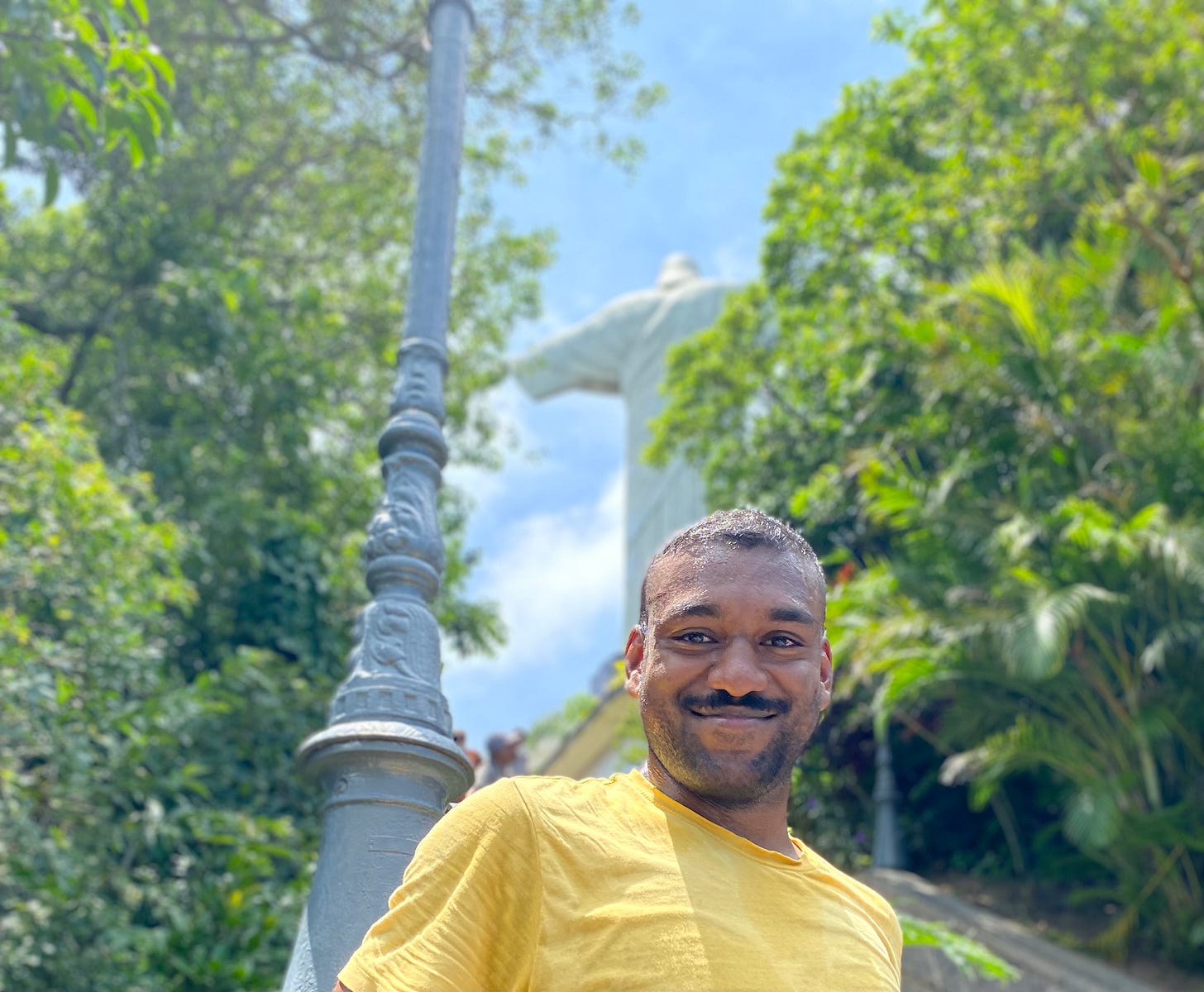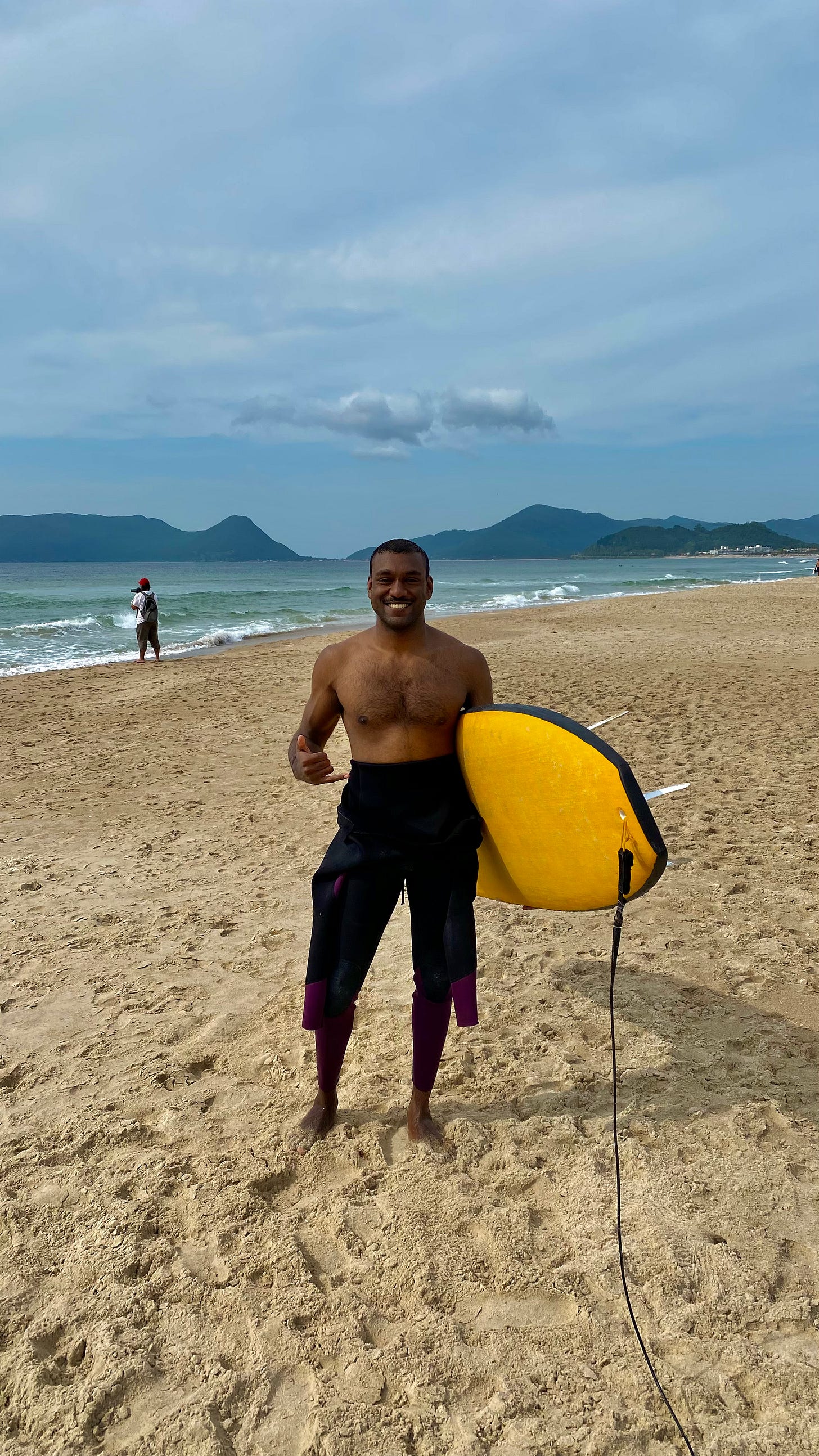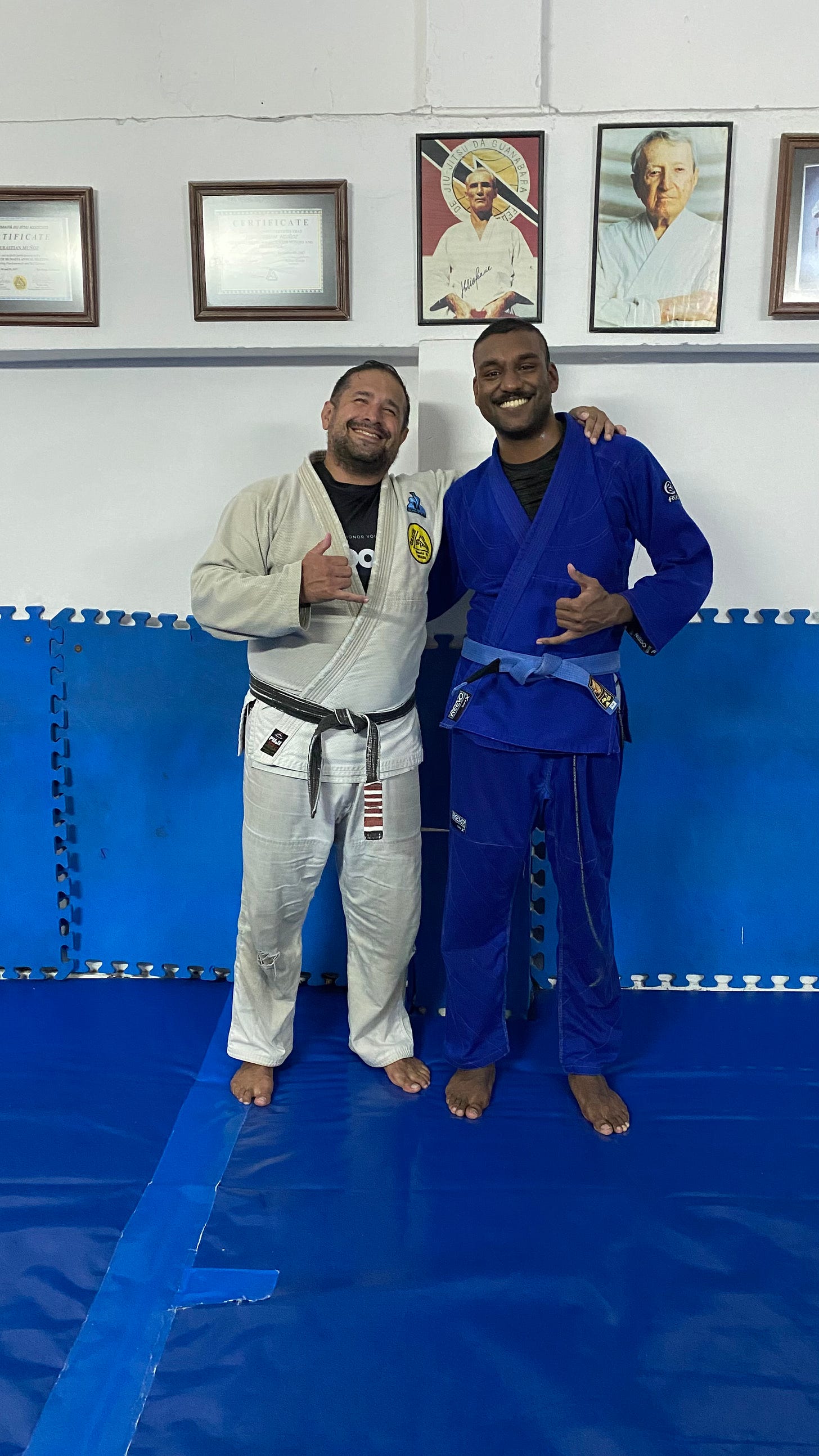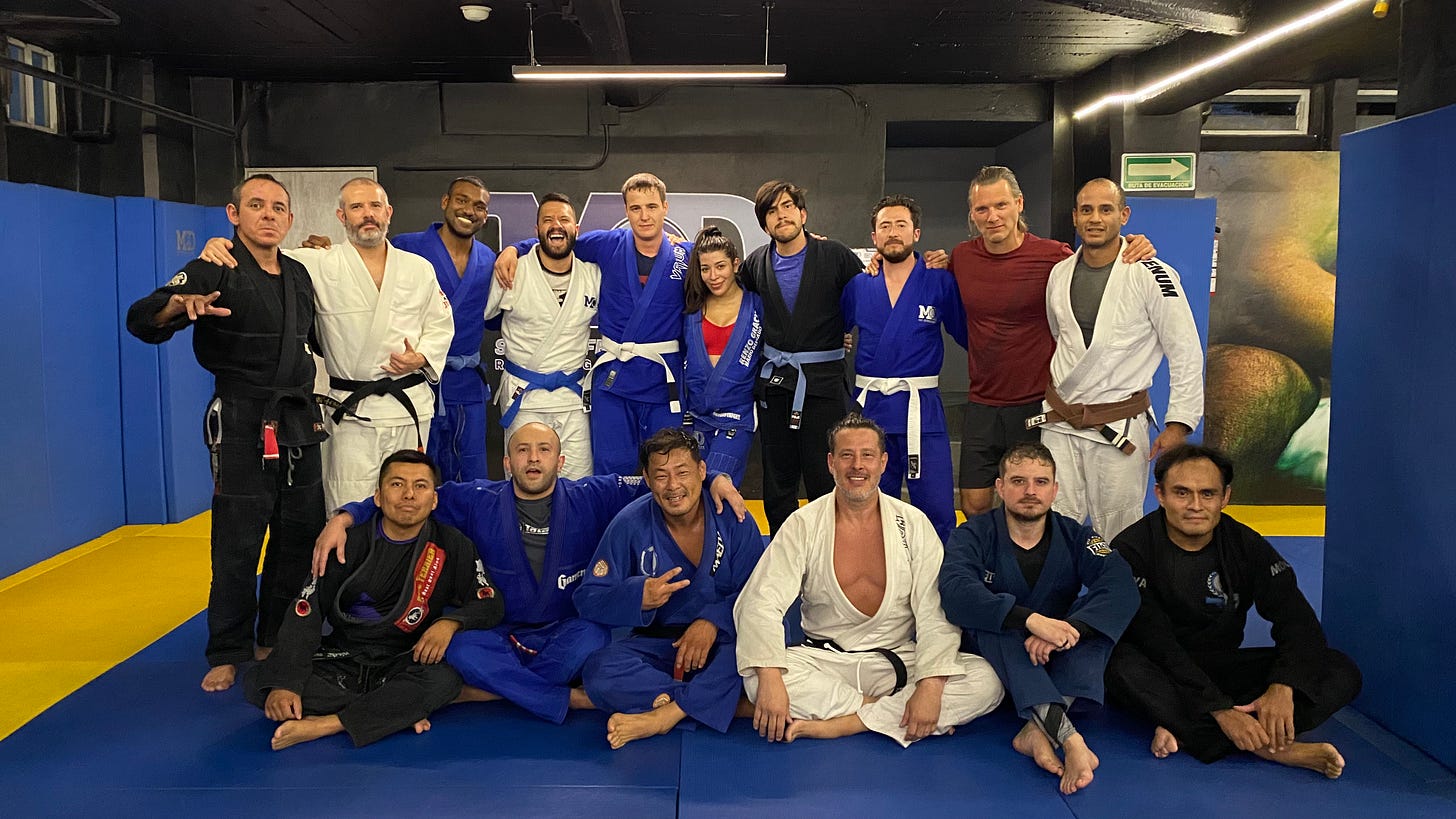I just returned from 6 months of travel in Argentina, Brazil, Peru, Mexico, and the United States. As I sink back into my old comfortable Calgary life, I want to know why my trip was so nourishing. This essay will try to help elucidate that. One thing that comes to mind is a focus on “self-defence.”
Latin America (Latam) is known for being dangerous. You can get robbed, you can get robbed at gunpoint or knifepoint, you can get shot or stabbed and then robbed, and you can also get abducted and have your bank accounts sucked dry. To top it off, I had obsessed with all of my Latin American friends before leaving Calgary over how dangerous Latam was. But when I arrived, I realized that I overestimated the risk and underestimated myself.
My first destination was Florianopolis, Brazil – the safest city in Brazil, and likely the city with the highest HDI in Brazil. It’s an island of rich people and stunning beaches. But I expected gangs of armed thugs wearing snapbacks and tank tops to be patrolling the streets, waiting for foolish foreigners with fat suitcases to naively walk into their crosshairs. It’s Brazil after all! So, I hid in my Airbnb as much as possible. The first time I went out was to buy food from a convenience store 3 minutes away. It was one of the scariest things I’ve ever done. Every passing car could rob me, along with every passing person. The fear was debilitating. I only brought one credit card and my keys with me. That was the advice I had heard: don’t display your wealth brazenly and don’t be flashy. That just invites robbers to rob you.
After a few days, faults appeared in my worldview. There were locals walking outside on their phones, with headphones. This was a big no no according to my Latino friends. I saw kids playing with their parents in parks. Nobody I saw was on edge or on alert. You could tell who to avoid, just like Calgary. These people walk around with a swagger, poorly fitting clothes, an air of contempt and anger, and no hope. They are in all cities.
My AirBnb host confirmed over a good 30 minutes explaining how and why Florianopolis was safe. You can go out with your wallet and phone. Nobody’s likely to drive by and rob you. The most dangerous places are this and that neighborhood because the people who live there are poorer. But by then I had already been to those places and found that they didn’t feel too unsafe.
So I took more risks. I ran outside. I walked to the grocery store with my wallet and phone. I went to the beach. I didn’t avoid people.
My newfound freedom felt amazing! I could finally explore the city and appreciate its beauty without fear. It felt like the first week of COVID. Once you got over your fear of going outside, it felt liberating.
Getting over that initial fear was just the first step. Next was self-defence. Muggings and violent events are not random. Psychologists have done studies where they show rapists and high school boys videos of random women walking down the street. Both were asked to pick which woman they would go after. Both identified the same women: those who were low in extraversion and high in neuroticism. Later on, the women also reported to the psychologists that they had been victimized many times before too. Thus, my goal was to not come across as an anxious introvert.
But faking the opposite of an anxious introvert is hard, as such a mask would likely fall apart the second it encountered a threat. The alternative then would be to develop not a mask, but a personality that would deter people from attacking you in the first place. Fortunately, two years of jiu jitsu gave me a head start.
I’ve trained at Wiley Jiu Jitsu for two years and received my blue belt from Pablo Garcia. Self-defence comes first at Wiley. In theory, blue belts are safe on the streets from a bigger, stronger opponent, and should be able to defend punches and kicks at any time. But for some reason, I was timid and careful with everybody. I would not take people down, or put them in submissive positions, or submit them because that it would feel mean. And I avoided doing all of this by telling myself that it helped my training partners work. But in the process, I didn’t get better. And I don’t think my training partners got as good as they could have had I pushed them more.
Two things changed when I went to Latam. One was to find my reason for doing jiu jitsu, so I could figure out which gym to join. Originally, I joined jiu jitsu to learn to defend myself should an argument get out of hand. But there’ll always be people stronger and more wicked than you, and being beat up is not an excuse to stay silent. Then I did jiu jitsu because it kept me in shape and I liked the community at Wiley. But now I was far away from Wiley. So I had to decide whether to join a jiu jitsu gym for competition or for self-defence. I ended up going to a self-defence gym called Relson Gracie in Florianpolis, and then Gracie Humaita in Argentina. These taught me a few things.
Brazilians are not shy with their strength. I had thought that using strength (and the prerequisite aggression that it needs) was bad because 1) it’s mean to the other person, 2) you’ll get tired rapidly, and 3) it makes up for a lack of technique. I was afraid that if I used my strength against someone, they’d use their strength against me in retaliation. Whenever someone used their strength on me, I’d try to crush them in response. But the Brazilians had no concept of this. They had their strength on 100% of the time. It was non-stop. Even white belts. No matter their size. The important lesson was that it was okay to use strength. And it also gave you an advantage! Turns out that in some positions, being a wet noodle is not helpful.
I hesitated to use strength in Argentina as well, but everyone at the gyms I visited could tell I was holding back. They didn’t trust me as a result. Jiu jitsu is a martial art, not a pyjama party or a cuddle session. You are training to dominate and incapacitate another person. So you should roll like it. I also introduced myself as a blue belt from Canada. If I didn’t roll well, they would likely think that Canadians were all willy nilly. So I had to represent my school’s jiu jitsu and nation well by rolling well.
Another thing I saw in Argentina was the perversions of people doing sports jiu jitsu. I saw people start a round by dropping to their butts. I saw the infinite plethora of modern guards (worm guard, spider guard, unicorn guard, galaxy guard, ______ guard). They mostly annoyed me. Sport-specific jiu jitsu depends on good sportsmanship. But if you’re on the streets, your opponent may kick your head or knee you in the balls, and there’ll be no referee to stop him. Sports jiu jitsu can seduce you into thinking that you’d be safe in a real fight. You won’t be.
I also got to experience true Gracie Jiu Jitsu at Gracie Humaita in Buenos Aires. My teacher, Sebastian Muñoz, learned jiu jitsu from Rolker Gracie, son of Helio Gracie, inventor of Brazilian jiu jitsu. I thought my defense was top notch because nobody could submit me. Sebas submitted me in the first minute of our roll. Nothing I did worked on him. He’d end up on top every time, and then he’d submit me. His movements felt intentional. Sometimes they were strong, other times loose, but always intentional. This made him efficient, letting him not waste all of his energy in one role. From a personality perspective, he was warm and funny, but also quite intimidating. I felt at all times like I should behave around him. You could tell within the first few seconds of meeting him that his aggression was right under the surface, ready to be deployed when needed. Self-defense then came to mean his personality, or at least my experience of it.
Over the course of four months in both Brazil and Argentina, I practiced rolling assertively. I applied my techniques. I went for all of the submissions that I was working on. I worked to get good positions. And I smashed. It turned out that submitting people feels good! And pushing hard gave others permission to push hard with me. That was the best. Then we became closer. As a result, people actually wanted to train with me more, not less. And they also liked me more, not less. Learning from Sebas and practicing aggression in jiu jitsu changed me from a timid, anxious introvert into someone assertive. I learned that if someone wanted to roll hard, I could and would match them. And if someone wasn’t rolling well, I would bulldoze past them to win.
The trip taught me that aggression is good and it keeps you safe. I learned to carry that aggression with me in my walk, when I met new people, when I went to new gyms, when I went after new goals, everywhere. The same applied to the streets. My vibe when walking on the streets, but also in every interaction with anyone I met was to signal that they would fuck with me at their peril.
Aggression is life itself. You push for what you want and you take it if the opportunity is there. If something gets in your way, then you push past it or move around it. Then you keep pushing. And that was how I transformed into the inverse of an anxious introvert on the streets. That was how Latin America taught me self-defense.








Solid read. That was badass!